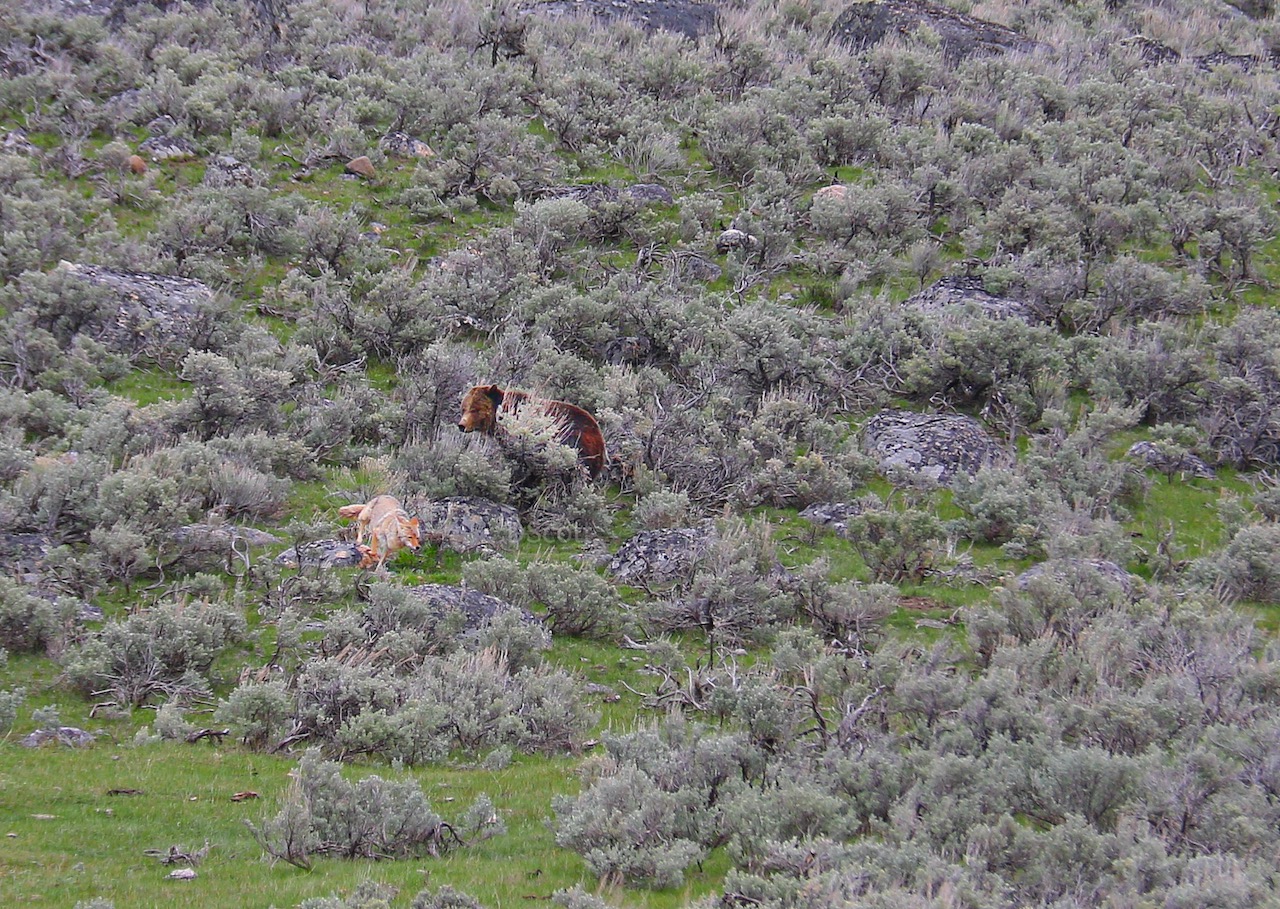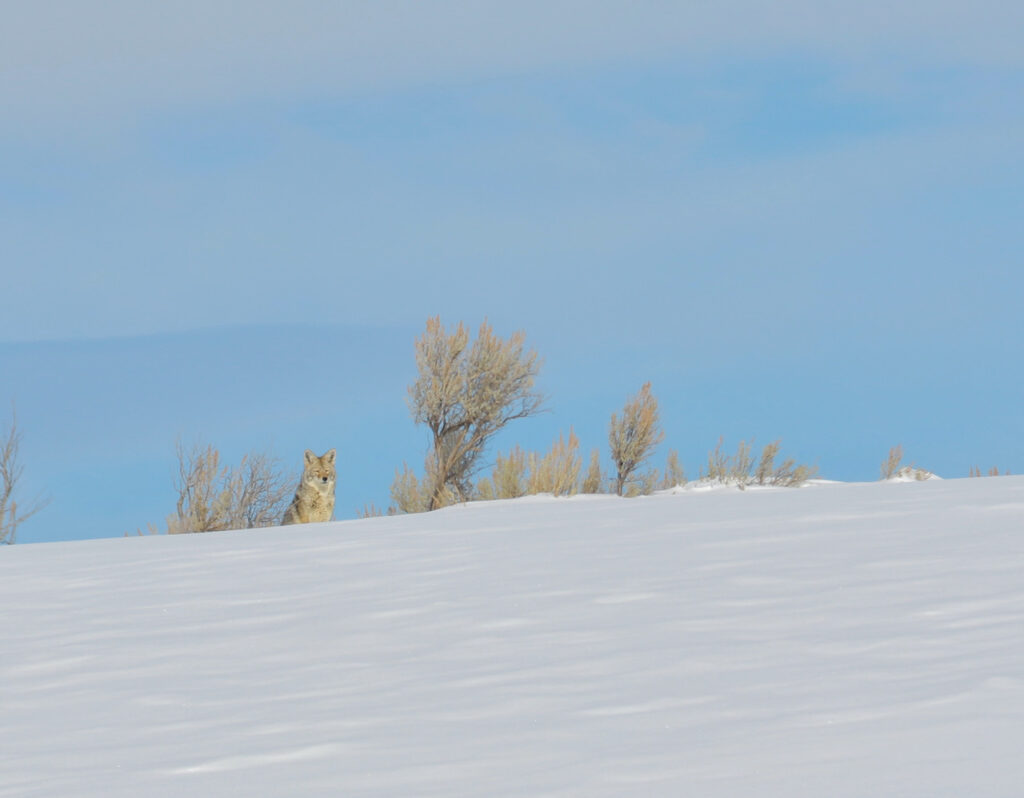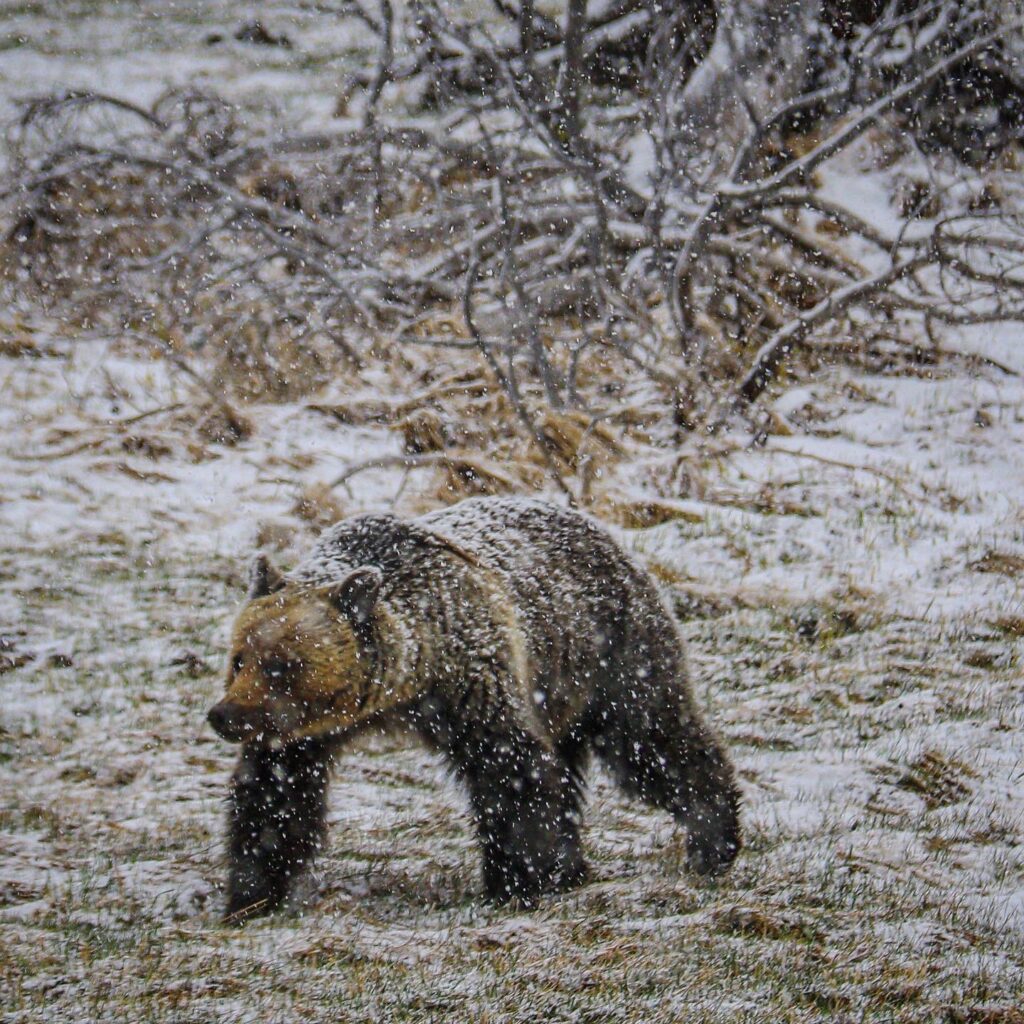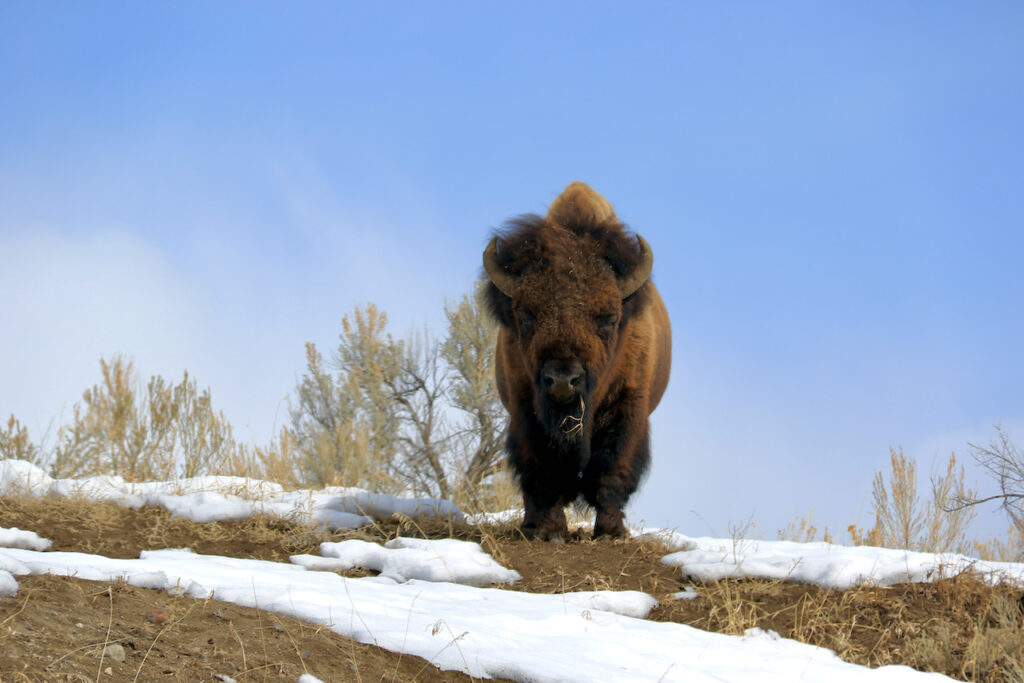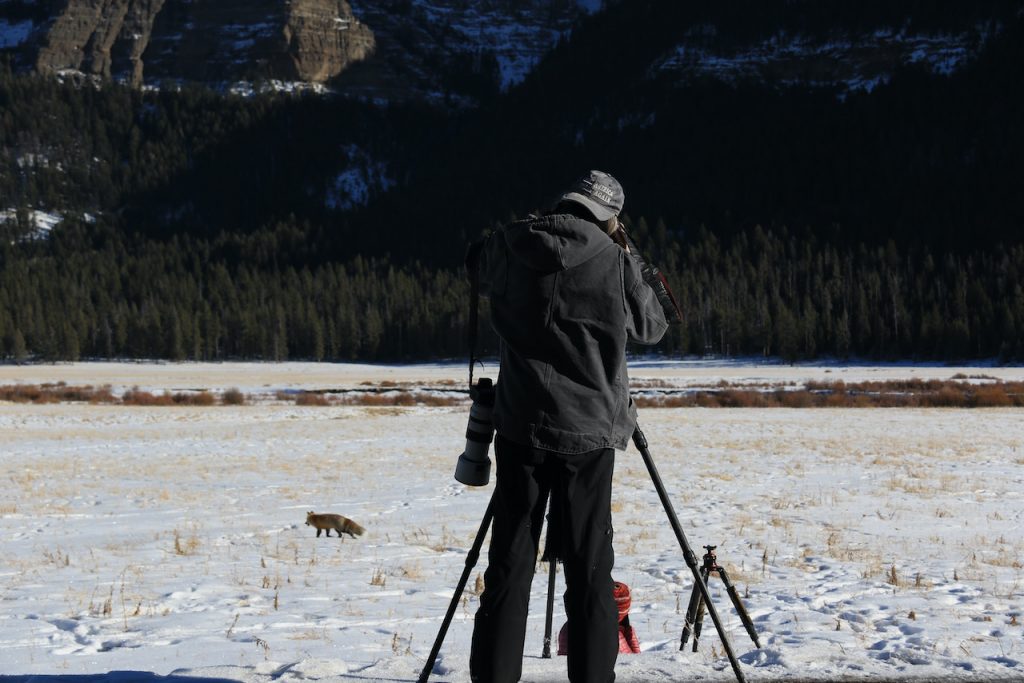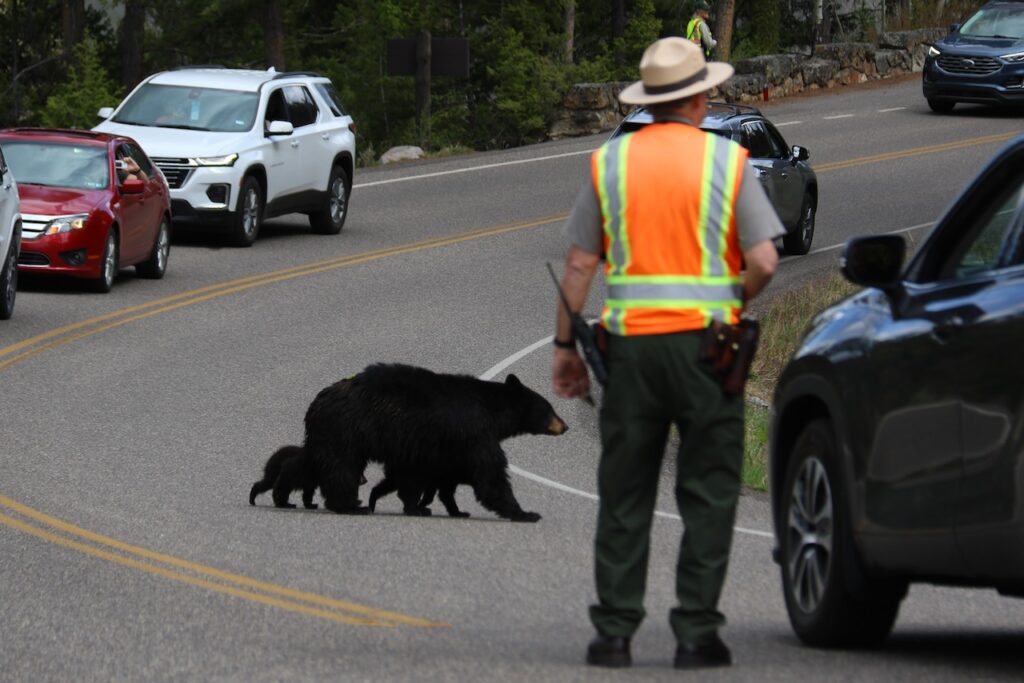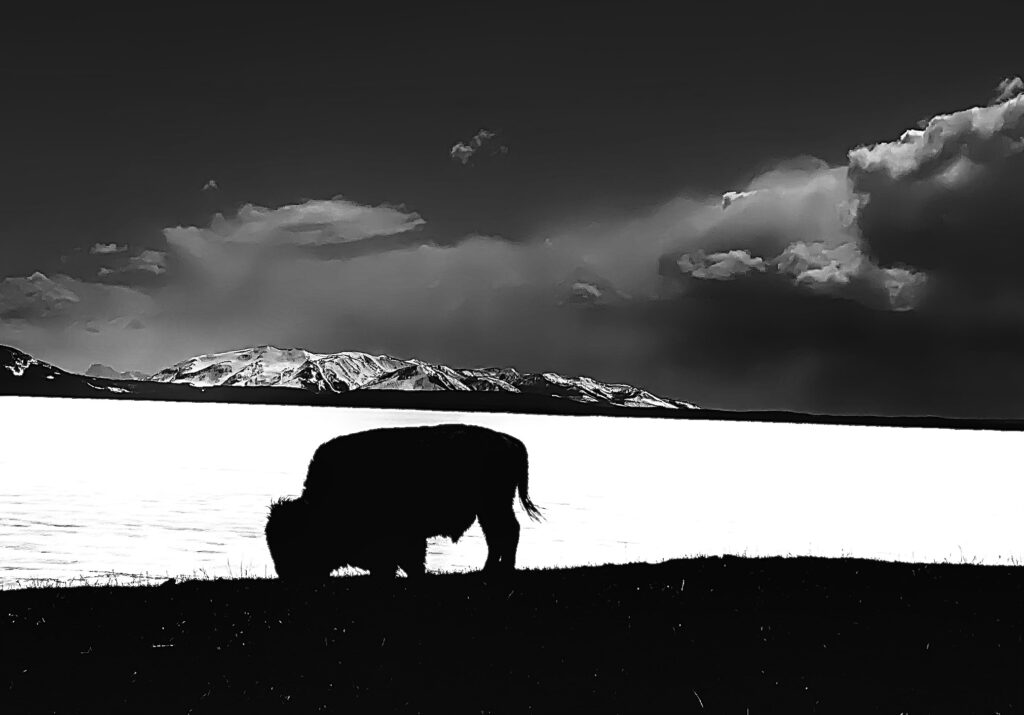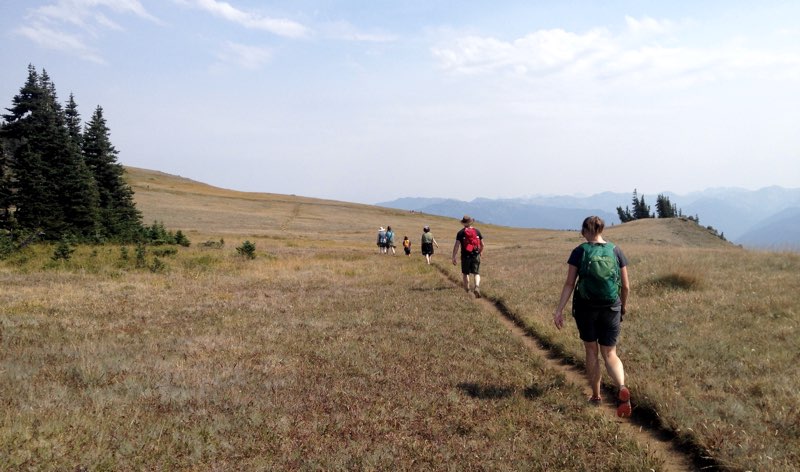Heading out to go wildlife-watching in Yellowstone National Park is an experience that may reward you with lifelong memories. Throughout the region, animals roam free, giving those who make the effort and take their time an opportunity to see wildlife like nowhere else.
As you ready yourself for encountering the park’s diverse wildlife, it is imperative to navigate this unique landscape with responsibility and respect, not just toward the wildlife, but to your fellow humans. Yellowstone’s captivating landscapes and flourishing ecosystems demand a delicate touch, urging visitors to adhere to a code of etiquette that ensures not only their safety but also the safety and well-being of the park’s remarkable inhabitants.
In this article, I’ll be sharing a few essential guidelines for wildlife-watching etiquette, as well as providing you with insights on how to make the most of your experience while treading lightly in this awe-inspiring landscape. From maintaining appropriate distances to preserving the tranquility of the environment, let this guide be your first step toward fostering a safe and respectful coexistence between human observers and the untamed wildlife that calls Yellowstone home.
Learn About the Park’s Animals
Dive into your Yellowstone adventure by educating yourself about the park’s wildlife and their behaviors. By understanding their natural habits, you will be able to make informed decisions and witness their activities without causing disruption. The easiest way to do this is to check out Yellowstone National Park’s page on wildlife, and/or pick up a wildlife-watching guidebook to the park.
Keep Optimal Viewing Distances At All Times
Enhance your wildlife viewing experience by maintaining a safe distance. Utilize binoculars or a telephoto lens to observe animals from at least 100 yards away for bears and wolves and 25 yards for all other wildlife. Capture incredible moments without intruding on their natural habitats.
If an animal starts walking toward you, it is your responsibility to walk away from it to maintain these distances. They are not approaching you because they want to be friends.
If you cause an animal to move, you’re too close. This quote is directly from Yellowstone National Park:
It’s illegal to willfully remain near or approach wildlife, including birds, within any distance that disturbs or displaces the animal.
Shhh. Whisper While Around Wildlife
Immerse yourself in the serenity of Yellowstone by minimizing noise pollution. Switch your phone to silent mode, keep your conversations hushed, and use discreet communication methods. This approach allows you to savor the natural sounds of the park and lets wildlife thrive undisturbed. Whispering and talking with a low voice ensures that you are not only giving a peaceful environment for the animal you are watching, but it also allows those around you to have the serenity they are hoping for when watching wildlife.
When parking, do not lock your doors to the point your car honks. Do not keep your engine running when sitting at a pullout, either.
Preserve The Landscape
More than likely, you’ll encounter wildlife while driving through the park. When you do, there is one appropriate place to stop and get out of your vehicle: a pullout or parking area. You are legally not allowed to stop on the road, nor are you allowed to drive off the road wherever you wish. Driving off the road severely damages the terrain and costs the park a lot of money to try to return to nature, if they can. By not being able to park wherever or stop on the road, you may not get the best possible wildlife sighting. Which sucks, I know. But that is nature for you. Sometimes you just have less than perfect luck. It is a good life lesson.
When watching wildlife on foot, stay on designated trails and boardwalks to protect delicate vegetation and wildlife habitats. Not only does this safeguard the environment, but it also minimizes the risk of unexpected wildlife encounters.
Practice Patience
Elevate your wildlife-watching experience by embracing patience. While driving through the park, you’ll get caught in a traffic jam caused by bison, bears, elk, wolves, or sometimes a bald eagle. It may take you an hour to drive 15 miles when encountering these backups. Some honk their horns and yell, but they aren’t getting anywhere any faster by doing that. If you get stuck in a backup, sit back, take deep breaths, and remember that you are still in Yellowstone National Park. Even the “ugliest” stretch of road in the park is better than being at a desk at work. Enjoy your vacation and embrace the moment.
When out of the car and watching animals, avoid sudden movements or haste that might startle animals. Give them the freedom to exhibit their natural behaviors while you enjoy observing them in their element. Do not call to them to make them lift their heads or move. This is illegal and could result in serious fines and/or expulsion from the park. Let the moment be what it is and once again enjoy being in Yellowstone.
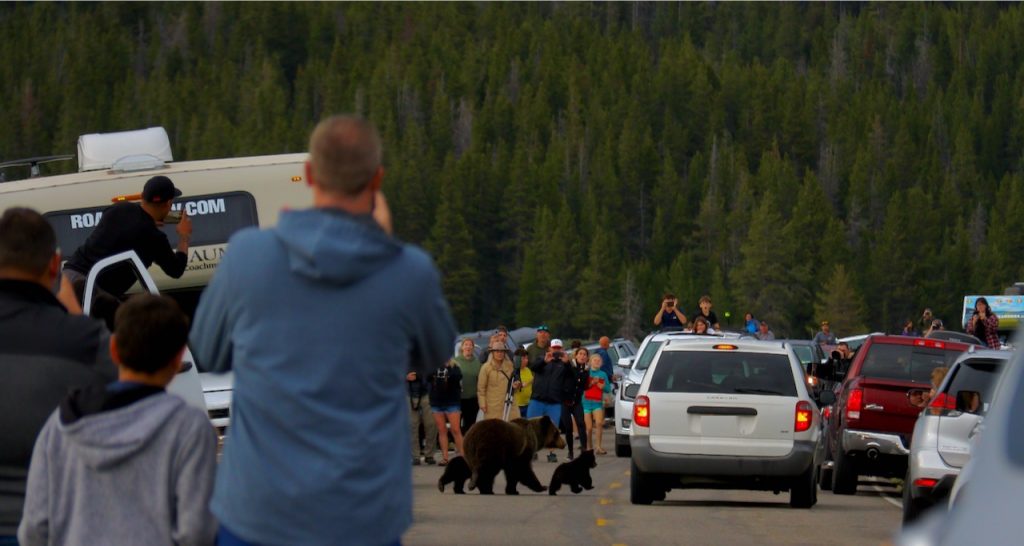
No Feeding Wildlife, No Approaching Wildlife
It is of the utmost importance to uphold ethical practices by refraining from feeding wildlife. If you feed an animal, be it a bear, a coyote, or even the chipmunks and ravens, you are disrupting their natural diet and may lead to their death. If an animal becomes dependent on human food, it will seek out human food as a priority. If a bear, wolf, or coyote does this, the park may have to exterminate the animal, as fed wild animals tend to become more aggressive toward humans.
I have said this before, but it needs to be repeated: Never attempt to approach or touch wild animals. ALWAYS stay at the park-approved distances from wildlife. If you are unable to get the picture you want and think you can just get closer for a second, don’t. Either get a better camera with a zoom lens or accept that maybe the perfect picture isn’t going to happen. Also, the animals in the park are much faster than you, and if and when they want to get you away from them, they will.
Comply with Yellowstone’s Rules and Regulations
Familiarize yourself with Yellowstone’s specific regulations on wildlife watching. As you enter the park, you’ll be given the option to receive a map and a park newspaper. Take these documents, as they have important information about all aspects of visiting the park, including wildlife-watching rules and regulations. Staying informed ensures a seamless experience for you and fellow visitors while respecting the park’s guidelines for the protection of its inhabitants.
I hate saying this, but please know that the regulations and laws are there for a reason. They are not merely suggestions, or rules that apply to others. Rangers will ticket you if they see you breaking these rules. If the action is egregious enough, you may receive jail time and get banned from National Parks.
Finally
I know that reading a list of things you shouldn’t do is always a bummer. I debated not writing this post at all. I decided to because the safety of animals and people in the park is something I strongly care about and I need to speak up. I want you to come to the park and immerse yourself in an unforgettable experience watching wildlife. I sincerely wish you see all of the wildlife you want to see and have fantastic memories. I just want you to do it in a way that keeps the wildlife and you safe and calm. By being responsible and leaving a positive impact on Yellowstone, we are ensuring that it will be cherished for generations to come.

